

European smart cities - Why smart cites? Why smart cities?
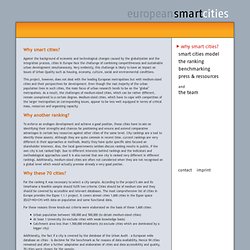
Against the background of economic and technological changes caused by the globalization and the integration process, cities in Europe face the challenge of combining competitiveness and sustainable urban development simultaneously. Very evidently, this challenge is likely to have an impact on issues of Urban Quality such as housing, economy, culture, social and environmental conditions. The Impacts of Energy-Smart Buildings. This white paper from Microsoft, Accenture and the Lawrence Berkeley Laboratory looks at how conducting an IT retrofit of building management tools can have a quick return on investment.

Microsoft, in partnership with Accenture and the Lawrence Berkeley National Laboratory, deployed smart building management systems on 2.6 million square feet of its corporate campus -- which totals 15 million square feet over 118 buildings. Through energy management, alarm management and fault detection and diagnosis, Microsoft expects to save more than $1 million per year in energy costs, with a payback time of less than 18 months. The Future of Cities, Information, and Inclusion. Over the next decade, cities will continue to grow larger and more rapidly.

At the same time, new technologies will unlock massive streams of data about cities and their residents. As these forces collide, they will turn every city into a unique civic laboratory—a place where technology is adapted in novel ways to meet local needs. Verdantix Blog. InnovCity. How Smarter Parking Technology Will Reduce Traffic Congestion. The Global Innovation Series is supported by BMW i, a new concept dedicated to providing mobility solutions for the urban environment.
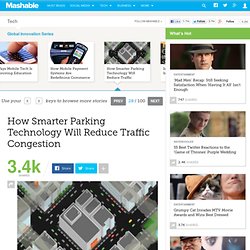
It delivers more than purpose-built electric vehicles — it delivers smart mobility services. Visit bmw-i.com or follow @BMWi on Twitter. Between 8% and 74% of traffic in congested downtown areas is caused by people cruising for parking, according to a report by UCLA professor Donald Shoup who synthesized studies from 70 years of research on the subject. The paper indicates that drivers in major cities — including San Francisco, Sydney, New York and London — spend between 3.5 and 14 minutes searching for a space each time they park. The last study Shoup included in his report ended in 2001. Anne Altman: There's a Smarter Way to Run Our Cities. Have you ever sat in rush hour traffic -- which adds up to about a work week annually for the average American, according to the Texas Transportation Institute's Urban Mobility Report-- and thought, "There's got to be a better way?
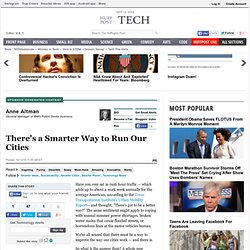
" A Closer Look at the Green City Index. [Editor's Note: Siemens' new Green City Index for North America has provoked the inevitable comments and questions about why some cities nailed top ratings, others tanked and still others weren't counted at all.

NRDC's Kaid Benfield takes a deep dive into the scores. Here is the first installment of his two-part examination.] I may as well start with the caveat that any attempt to measure, score or rank places with respect to almost anything will be incomplete at best and can be wildly misleading at worst. First, rating systems tend to assign numerical grades to things that are partially or entirely subjective. Alex Steffen: The shareable future of cities. Paul Romer: The world's first charter city? Florence Hudson: Smarter Buildings Make for a Sustainable Future. Recently I was in Los Angeles on vacation and business.

Making Sense of SENSEable Cities. IBM isn’t the only organization that thinks cities could be a lot “smarter.”
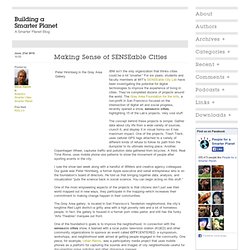
For six years, students and faculty members at MIT’s SENSEable City Lab have been investigating the potential for digital technologies to improve the experience of living in cities. They’ve completed dozens of projects around the world. The Gray Area Foundation for the Arts, a non-profit in San Francisco focused on the intersection of digital art and social progress, recently opened a show, senseable cities, highlighting 15 of the Lab’s projects. Very cool stuff. The concept behind these projects is simple. I saw the show last week along with a handful of IBMers and creative agency colleagues. Turning Off the Light on the Environment. On June 12, U.S.

House Republicans failed to revoke the lighting efficiency restrictions mandated by the 2007 law, The Energy Independence and Security Act of 2007, or HR 6. This law would phase out incandescent bulbs, and is one that Republicans themselves sponsored. Republicans did, however, pass legislation that removes the funding needed to enforce the 2007 law. San Francisco rolls out new smart parking meters with 'demand-responsive pricing' Revitalizing Struggling American Cities (September 16, 2011) Living Cities is working with five US municipalities to develop an ecosystem for solving urban problems.
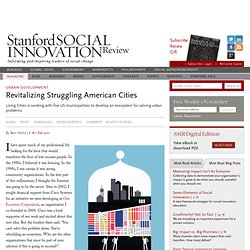
Big data and smart cities. New York Releases 'Road Map for the Digital City' New York City will develop an open government framework featuring APIs for city data, relaunch its website and make a host of changes to the way it presents government information online, according to a report prepared by the city and announced today. The city's newly minted chief digital officer, Rachel Sterne, prepared the report as her first task upon arriving in city hall. They're streaming a related announcement now, live, from New York City Hall. Amsterdam Smart City.